

How Many National Parks in Florida?: 11 Fabulous Florida National Parks

Article Summary: National Parks in Florida, Florida National Parks Map, How Many National Parks Are In Florida?
Having grown up in Florida, I’ve learned a thing or two about my hometown Florida national parks. Here’s a complete list of the national parks in Florida , including everything you need to begin planning your visit.
All 11 national parks in Florida are some of the most unique in the country. From the diverse Everglades to the historic Castillo de San Marcos, there’s a lot to discover here.
While you’ve probably heard about Florida’s three big National Parks down south, the other eight are definitely worth a visit as well.
This post may contain affiliate links. If you make a purchase, I may earn a small commission at no additional cost to you. For more information, view my privacy policy .
Table of Contents
Map of National Parks in Florida
Click the image below to view or download a larger version of the map.

List of National Parks in Florida
- Dry Tortugas
List of All Florida National Parks (every site managed by the National Park Service)
Big cypress national preserve, biscayne national park.
- Cape Canaveral National Seashore
Castillo de San Marcos National Monument
- De Soto National Monument
Dry Tortugas National Park
Everglades national park.
- Fort Caroline National Monument
Fort Matanzas National Monument
Gulf islands national seashore.
- Timucuan Ecological and Historic Preserve
National Parks in Florida Road Trip Itinerary
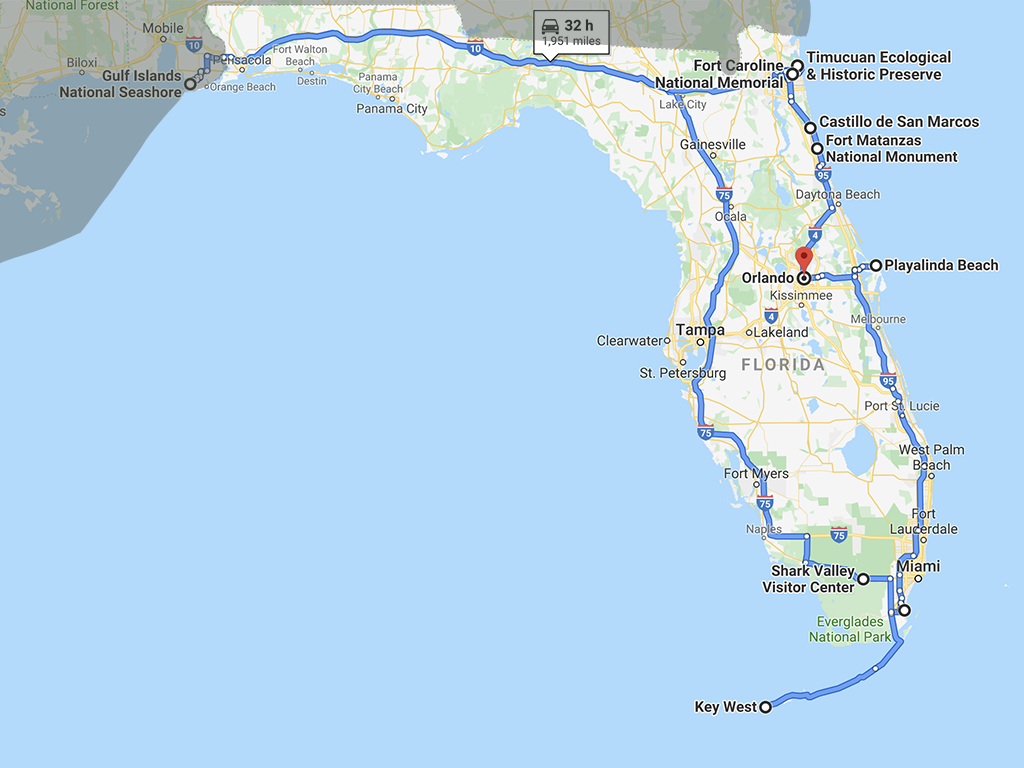
Fly in/out : Orlando
Day 1 : Drive from Orlando to Canaveral National Seashore’s Playalinda Beach near Titusville (1-hour drive)
Day 2 : Leave Cape Canaveral and head south toward Miami, Homestead, and Biscayne National Park (4-hour drive)
Day 3 : Spend the day snorkeling or taking a tour in Biscayne National Park
Day 4 : Drive to Key West, taking your time to appreciate the scenery (3-hour drive)
Day 5 : Head out to Dry Tortugas National Park for a day trip or an incredible, secluded night of camping
Day 6 : Drive to Everglades National Park’s Shark Valley Visitor Center (3.5-hour drive)
Day 7 : Spend one day (or more) exploring the many areas of the Everglades: Shark Valley, Royal Palm, and Flamingo
Day 8 : Drive to Everglades City, the home of the Everglade’s Gulf Coast, via Big Cypress National Preserve (1-hour drive)
Day 9 : Drive to De Soto National Memorial near Tampa (3-hour drive)
Day 10 : Drive to Gulf Islands National Seashore, a site shared between Florida and Mississippi (8-hour drive)
Day 11 : Relax on the pristine beaches on the Gulf Islands
Day 12 : Drive to Jacksonville where you’ll find Fort Caroline National Memorial and Timucuan Ecological and Historic Preserve (6-hour drive)
Day 13 : Enjoy the national parks in Jacksonville and head toward St. Augustine (1.5-hour drive)
Day 14 : Visit your two last national parks in Florida, Castillo de San Marcos National Monument and Fort Matanzas National Monument, then drive south to Orlando (1.5-hour drive)

Big Cypress National Preserve is so much more than just a swamp.
While it does protect 729,000 acres of wild swampland, it’s also a very important home to creatures such as the American alligator you see above.
The marsh also supports the Florida coastline’s marine estuaries and the park’s neighbor, the Everglades. Keep an eye out for the rare and elusive Florida Panther during your visit.
How to Get There : There are two visitor centers in Big Cypress: Big Cypress Welcome Center (33000 Tamiami Trail East, Ochopee, Florida 34141) and Oasis (52105 Tamiami Trail East, Ochopee, Florida 34141).
Map : download here
Things to Do : Biking, birding, camping, canoeing, hiking, hunting, kayaking, off-roading, ranger-led tours , scenic drives, swamp tours, stargazing, swamp buggies
Park Entrance Fee : None, however, some activities do require fees .
Where to Stay : Chickee Cottages , River Wilderness Waterfront Villas , Ivey House
Official Website : click here
Speak to a Park Ranger : Call (239) 695-2000

Biscayne National Park preserves some of Florida’s best coastline along with underwater treasures. In fact, 95% of Biscayne is underwater. Therefore, the best way to see the park is to snorkel or scuba dive.
In places, the water is so clear you could see some amazing things from a sailboat or kayak.
One of the major highlights is Stiltsville, a colony of old houses on stilts that have been bombarded by storms and hurricanes.
How to Get There : The main visitor center is located at 9700 SW 328th Street, Sir Lancelot Jones Way, Homestead, FL 33033.
Things to Do : Boating, camping, diving, fishing, paddling, snorkeling, swimming
Park Entrance Fee : None
Where to Stay : Hoosville Hostel , Hampton Inn , TownePlace Suites
Speak to a Park Ranger : Call (305) 230-1144
Canaveral National Seashore

Growing up, this was the closest national park to my home. I actually had my senior photos taken here in high school! Obviously, the park is special for many reasons beyond my personal connection to it.
Canaveral National Seashore protects miles of shorelines and barrier islands so remote that there are no roads, something difficult to find in an over-developed state like Florida.
Nearby, the Kennedy Space Center launches rockets and houses a fantastic museum while Merritt Island National Wildlife Refuge hosts some unique nature in its own right. A trip to the Space Coast should include all three if you have the time!
How to Get There : There are two entrances to the park, and you cannot drive straight to one end of the Seashore from the other. Rather than addresses, I would recommend using GPS coordinates for the two visitor centers: Apollo Beach in New Smyrna Beach (28.9368, -80.8302; or 7611 S. Atlantic Ave., New Smyrna Beach, FL 32169) and Playalinda Beach near Titusville (28.6450, -80.6834). For more directions, click here .
Things to Do : Canoeing, snorkeling, night sky programs, rocket launches, turtle watch
Park Entrance Fee : $20 per vehicle or $10 per person, valid for 7 days
Where to Stay : TownePlace Suites , Hampton Inn , Riverview Hotel , Night Swan B&B
Speak to a Park Ranger : Call (321) 267-1110

On the shores of the country’s oldest city sits a massive Castillo that had been fought over for centuries. While walking through the Castillo, you will discover many rooms harboring stories of those who came before us. Each tells tales of different ownership during different times as well as the battles fought here.
Nearby, don’t miss the oldest schoolhouse and the supposed Fountain of Youth. Ponce de Leon discovered Florida while in search of this immortal treasure.
How to Get There : Once you’ve arrived in St. Augustine, the Castillo is difficult to miss. Use the address 1 South Castillo Drive, Saint Augustine, FL 32084.
Things to Do : Castillo, historic weapons demonstrations , ranger programs
Park Entrance Fee : The fee to enter is $15 per person and is valid for 7 days. There is also a $2.50 fee to park in the large parking area in front of the Castillo.
Where to Stay : St. George Inn , Agustin Inn , Spanish Street Inn
Speak to a Park Ranger : Call (904) 829-6506
De Soto National Memorial

Conquistador Hernando de Soto landed here in 1539 in search of glory and gold. His quest would lead him on a long journey traversing over 4,000 miles. Subsequently, he and the men with him had a massive role to play in history.
Today, the park aims to provide information on De Soto and the impact he had on the Native Americans here. During your visit, see if any living history demonstrations are scheduled.
How to Get There : Use the address 8300 De Soto Memorial Hwy, Bradenton, FL 34209 to find De Soto National Memorial.
Things to Do : Birding, boating, camping, fishing, hiking, kayaking, living history demonstrations, museum
Where to Stay : SpringHill Suites , Hampton Inn
Speak to a Park Ranger : Call (941) 792-0458 x105

Dry Tortugas is basically the coolest place I’ve ever been to, not to mention the best place I’ve camped.
Fort Jefferson is the center-piece, but this dazzling set of islands off the coast of Key West has so much more to offer.
Definitely bring the snorkel gear along, and don’t forget to book your camping reservations well in advance. Lastly, don’t forget to sign-up for a guided tour of Fort Jefferson.
How to Get There : The park can only be reached by air or sea. Most visitors arrive on the Yankee Freedom ferry from Key West.
Things to Do : Birding, boating, camping, diving, fishing, snorkeling, swimming
Park Entrance Fee : Entrance fees are $15 per person, valid for 7 days. This fee is in addition to ferry tickets and camping fees.
Where to Stay : Seashell Motel & Hostel , Knowles House , Garden House
Speak to a Park Ranger : Call (305) 242-7700

I may live in Alaska, but I still view the Everglades as one of the prime examples of true Wilderness. While the rest of Florida is extremely over-developed, this nugget of land has remained untouched and preserved.
The animals that call Everglades National Park home are some of the world’s most exotic. The bird-watching opportunities alone are sensational.
If you’re hoping to see this park through the best lens, view it from a kayak or canoe while meandering the mangrove mazes.
How to Get There : There are many visitor centers and entrances to Everglades National Park. For detailed instructions on each one, click here .
Things to Do : Birding, biking, boating, camping, canoeing, fishing, hiking , kayaking, ranger programs
Park Entrance Fee : $30 per vehicle or $15 per person, valid for 7 days
Where to Stay : Fairway Inn , Travel Lodge , Super 8
Fort Caroline National Memorial

To be completely honest, of all the national parks in Florida, this was the one I was most disappointed by.
The name is very misleading, as Fort Caroline no longer exists. However, it did once stand here. Now, the park is best known for the trails that serve hikers and trail runners alike.
There are also living history demonstrations and a visitor center. Fort Caroline is managed together with Timucuan Ecological & Historic Reserve, a separate park with a unit across the street.
How to Get There : You can use the address 12713 Fort Caroline Rd., Jacksonville, FL 32225 to find the visitor center.
Things to Do : Biking, camping, hiking, paddling, wildlife watching
Where to Stay : Amelia Schoolhouse Inn , Hampton Inn , Amelia Hotel and the Beach , Residence Inn
Speak to a Park Ranger : Call 904-641-7155

While much smaller than nearby Castillo de San Marcos, Fort Matanzas has its own charm. Its location was crucial for securing a Spanish victory over the French in 1565.
The required ferry ride to the Fort adds a special feeling to your visit. You don’t need much time to see the entire Fort once you arrive on Rattlesnake Island.
As of 2022, ferries are only running Wednesday through Sunday on an extremely limited basis. For updates, visit the official website or call the number below.
How to Get There : Visit the visitor center at 8635 A1A South, Saint Augustine, FL 32080 to retrieve boat tickets to reach Fort Matanzas.
Things to Do : Boating, fort tours, hiking, fishing
Park Entrance Fee : None; ferry tickets are also free, but reservations are required and can only be made in person at the visitor center.
Speak to a Park Ranger : Call (904) 471-0116

Gulf Islands National Seashore includes barrier islands in Florida and Mississippi.
The Florida unit includes Pensacola Bay, Fort Barrancas, Fort Pickens, Perdido Key, portions of Santa Rosa Island, and the Naval Live Oaks Area.
The major attraction here is the absolutely pristine white sandy beaches. Some of the best beach-side outdoor recreation in Florida can be done here on these islands.
How to Get There : For directions to Florida’s Fort Barrancas Visitor Center, click here .
Things to Do : Biking, birding, boating, camping, diving, fishing, hiking, historic forts, ranger-led tours , sailing, snorkeling, stargazing, swimming
Park Entrance Fee : $25 per vehicle or $15 per person, valid for 7 days
Where to Stay : Hampton Inn , Surf & Sand , New World Inn
Speak to a Park Ranger : Call (850) 934-2600
Timucuan Ecological & Historic Preserve

My favorite part of my visit to Timucuan was the ranger-led tour of the Kingsley Plantation, pictured above.
The park ranger presenting the tour was excellent, and we learned a great deal about the slaves who once lived here. They were treated better than most slaves in the South.
Timucuan is best known for protecting 6,000 years of human history alongside its diverse ecological resources. The official website has a wonderful itinerary for a great day in the park.
How to Get There : You can use the address 12713 Fort Caroline Rd., Jacksonville, FL 32225 to find the visitor center that serves both Fort Caroline and Timucuan.
Things to Do : Biking, camping, hiking, paddling, plantation tours , wildlife watching
Pin National Parks in Florida

Riley has been visiting national parks for as long as she can remember. Her newest passion is sharing her love of national parks with the world by planning trips, writing about her travels, and offering advice. One day, Riley hopes to visit all 429 national parks.
Similar Posts
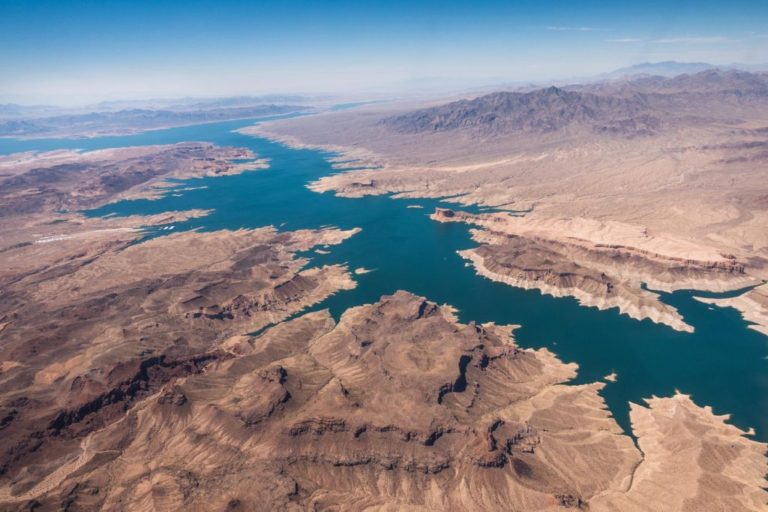
National Parks Near Las Vegas: 20 Parks Within 300 Miles of the Neon Capital of the World

Yellowstone Itinerary: 4 Days in the World’s First National Park

Camping at Dry Tortugas National Park: Everything You Need to Know

National Park Entry Fees: How Much Will My Trip Cost?

23 National Parks with Breathtaking Waterfalls

Follow the Footsteps of Alexander Hamilton in America’s National Parks
Wow! Such a beautiful explanation of the National Parks in Florida! Thank you for sharing.
It’s really interesting that you consider Everglades a true wilderness, even when compared to Alaska. I always think of Florida as super developed, so it is awesome to hear that the state is full of pockets of natural beauty and biodiversity!
Fab post Riley! <3
Most definitely! It’s a different kind of wilderness, but undoubtedly wild all the same.
- Pingback: The Only Everglades National Park Guide You'll Need • Riley's Roves
Wow! This is a great list of national parks in Florida! I’m definitely going to have to add a few to my list!
I hope you do!
Wow, this is so helpful! I’m planning a trip to Florida soon and I had no idea there were so many national parks in the state. Can’t wait to explore them all and enjoy the beautiful scenery and wildlife. Thank you for updating the list for 2024, it’s been super helpful! ️
Leave a Reply Cancel reply
Your email address will not be published. Required fields are marked *
Save my name, email, and website in this browser for the next time I comment.
This site uses Akismet to reduce spam. Learn how your comment data is processed .
- Skip to global NPS navigation
- Skip to park navigation
- Skip to main content
- Skip to park information
- Skip to footer

National Preserve

Big Cypress
Ochopee, FL
The freshwaters of the Big Cypress Swamp, essential to the health of the neighboring Everglades, support the rich marine estuaries along Florida's southwest coast. Conserving over 729,000 acres of this vast swamp, Big Cypress National Preserve contains a mixture of tropical and temperate plant communities that are home to diverse wildlife, including the Endangered Florida panther.

- Alerts & Conditions »
- Basic Information »
National Park
Miami, Key Biscayne & Homestead, FL
Within sight of Miami, yet worlds away, Biscayne protects a rare combination of aquamarine waters, emerald islands, and fish-bejeweled coral reefs. Evidence of 10,000 years of human history is here too; from prehistoric tribes to shipwrecks, and pineapple farmers to presidents. For many, the park is a boating, fishing, and diving destination, while others enjoy a warm breeze and peaceful scenery.

National Seashore
Titusville and New Smyrna Beach, FL
Reflect on the barrier island which is composed of dune, hammock, and lagoon habitat. Explore ancient Timucua shell mounds. Experience the sanctuary that is provided for thousands of species of plants and animals that call Canaveral National Seashore home.

National Monument
Castillo de San Marcos
St. Augustine, FL
Built by the Spanish in St. Augustine to defend Florida and the Atlantic trade route, Castillo de San Marcos National Monument preserves the oldest masonry fortification in the continental United States and interprets more than 450 years of cultural intersections.

National Memorial
Bradenton, FL
In May 1539, Conquistador Hernando de Soto’s army of soldiers, hired mercenaries, craftsmen, and clergy made landfall in Tampa Bay. They were met with fierce resistance of indigenous people protecting their homelands. De Soto’s quest for glory and gold would be a four year, four thousand mile odyssey of intrigue, warfare, disease, and discovery that would form the history of the United States.

Dry Tortugas
Key West, FL
Almost 70 miles (113 km) west of Key West lies the remote Dry Tortugas National Park. This 100-square mile park is mostly open water with seven small islands. Accessible only by boat or seaplane, the park is known the world over as the home of magnificent Fort Jefferson, picturesque blue waters, superlative coral reefs and marine life, and the vast assortment of bird life that frequents the area.

- Current Conditions »
Miami, Naples, and Homestead, FL
Everglades National Park protects an unparalleled landscape that provides important habitat for numerous rare and endangered species like the manatee, American crocodile, and the elusive Florida panther. An international treasure as well - a World Heritage Site, International Biosphere Reserve, a Wetland of International Importance, and a specially protected area under the Cartagena Treaty.

Fort Caroline
the Timucuan Preserve; Jacksonville, FL
At the settlement of la Caroline , French settlers struggled for survival in a new world. Many sought religious freedom in a new land, while others were soldiers or tradesmen starting a new life. The climactic battles fought here between the French and Spanish marked the first time that European nations fought for control of lands in what is now the United States. It would not be the last time.

Fort Matanzas
Fort Matanzas National Monument preserves the fortified coquina watchtower, completed in 1742, which defended the southern approach to the Spanish military settlement of St. Augustine. It also protects approximately 300 acres of Florida coastal environment containing dunes, marsh, maritime forest, and associated flora and fauna, including threatened and endangered species.

Gulf Islands
Gulf Breeze, Florida and Ocean Springs, Mississippi , FL,MS
Millions of visitors are drawn to the Gulf of Mexico for Gulf Islands National Seashore's emerald coast waters, magnificent white beaches, fertile marshes and historical landscapes. Come explore with us today!

- Temporary Road and Facility Closures »
Ecological & Historic Preserve
Jacksonville, FL
Visit one of the last unspoiled coastal wetlands on the Atlantic Coast. Discover 6,000 years of human history and experience the beauty of salt marshes, coastal dunes, and hardwood hammocks. The Timucuan Preserve includes Fort Caroline and Kingsley Plantation.

By The Numbers
- 11 National Parks
- 14,471,710 Visitors to National Parks
- $1,458,700,000 Economic Benefit from National Park Tourism »
- $175,225,407 of Land & Water Conservation Fund Appropriated for Projects (since 1965) »
- 83 Certified Local Governments »
- 66 Community Conservation & Recreation Projects (since 1987) »
- 1 National Heritage Area »
- 2 Wild & Scenic Rivers Managed by NPS »
- 1,893 National Register of Historic Places Listings »
- 46 National Historic Landmarks »
- 18 National Natural Landmarks »
- 1 World Heritage Site »
- 798 Places Recorded by Heritage Documentation Programs »
- 11,709,176 Objects in National Park Museum Collections »
- 1,192 Archeological Sites in National Parks »
- 8 Teaching with Historic Places Lesson Plans »
- 11 Discover Our Shared Heritage Travel Itineraries »

These numbers are just a sample of the National Park Service's work. Figures are for the fiscal year that ended 9/30/2020.
More Information
- Photos & Multimedia
- Nationwide News
- Get Your America the Beautiful Pass!
- Work With Us
- Skip to right header navigation
- Skip to main content
- Skip to secondary navigation
- Skip to primary sidebar

Learn how to easily plan your dream trip to Florida!
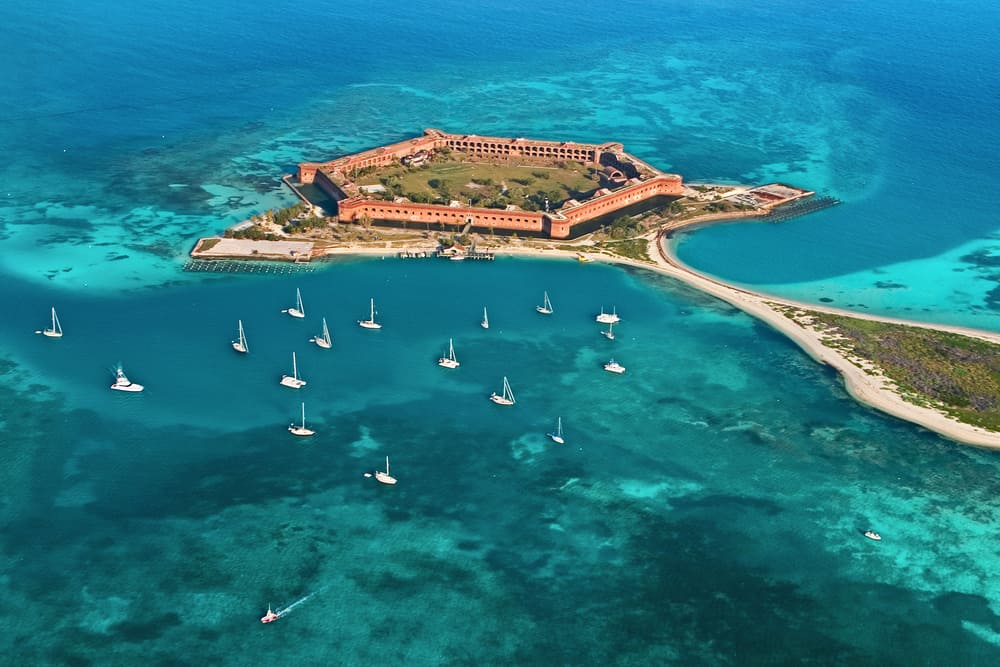
12 Best National Parks In Florida To Explore
August 9, 2020 // by Florida Trippers
Are you looking to explore and get lost in the beauty of the best National Parks in Florida? Well, you’ve come to the right place!
Florida’s National Park’s are diverse and rich in nature, and depending on where you are in the state, each park offers a unique experience.
So if you’re seeking adventure, the National Parks in Florida are sure to give you a thrill with exciting activities such as camping, boating, snorkeling, hiking, paddling, biking, and historic site-seeing.
What’s so amazing about Florida’s National Parks, is that they do not fit the definition of your tradition national parks. They are so much more, from national monuments, everglades, pristine undeveloped seashores, islands, unspoiled coastal wetlands, and sparkling crystal-clear turquoise waters.
The activities are endless and are spread across the state, so if you aim to hit all the best National Parks in Florida, be prepared to travel and have ample time on your hands!
Below we have put together of the Best National Parks in Florida as well as some of the unique activities that each park offers. We hope you visit each and every park and that you have a memorable and fun time!
Remember, these National Parks in Florida are not listed in any particular order, for they are all amazing places to visit and explore.
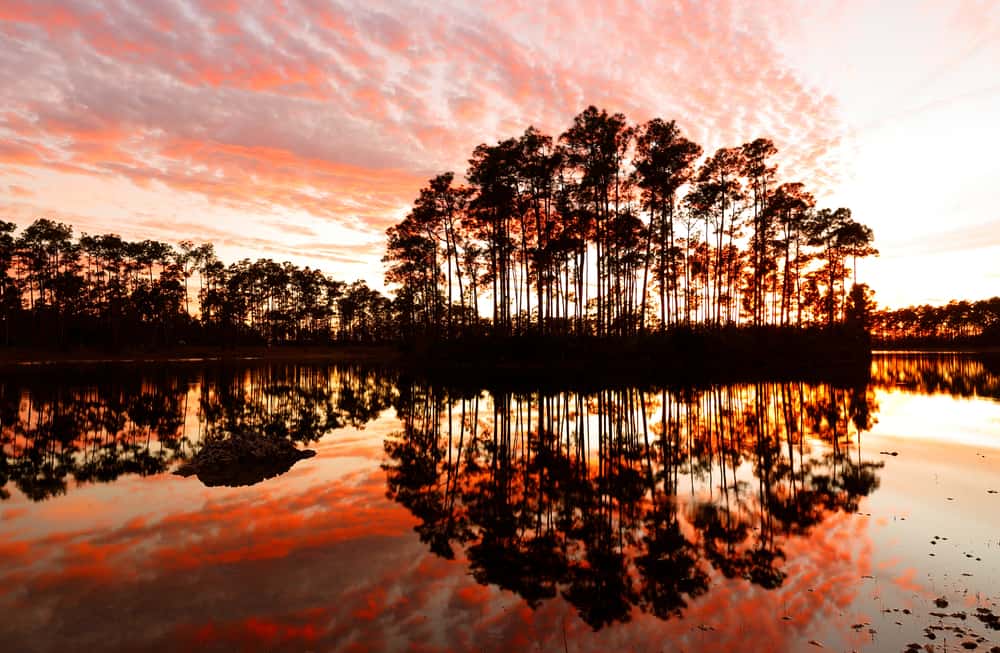
12 Best National Parks in Florida To Explore
Everglades national park.
Everglades National Park is the largest subtropical wilderness in the United States, and is the largest wilderness east of the Mississippi River. This National Park in Florida is so huge that it spans 1.5 million acres over the southern part of Florida.
The park is broken up into three main areas. You can access the northern end of the park from Miami or Everglades City, and the southern section from Homestead. Due to the expansive amount of land, it is essential to know what section you want to explore so you can get the most out of your visit.
The landscape is unparalleled, and is home to a diverse and fragile ecosystem with tropical hammocks, coastal lowlands, mangroves, and cypresses.
This habitat includes a wide variety of rare and endangered species, such as the American crocodiles, the great blue herons, alligators, manatees, Florida panthers, dolphins, and many, many more.
This National Park in Florida offers a variety of activities for families, groups, or individuals to explore and have fun in the great outdoors. So what activities can you do?
You can bike on trails, you can birdwatch and hopefully catch a glimpse of the great blue heron, you can fish, you can geocache, you can hike on trails, or you can go slough slogging which is off-trail hiking that brings you deeper into the park. You can also participate in ranger lead programs in which rangers lead guided tours or activities throughout the park.
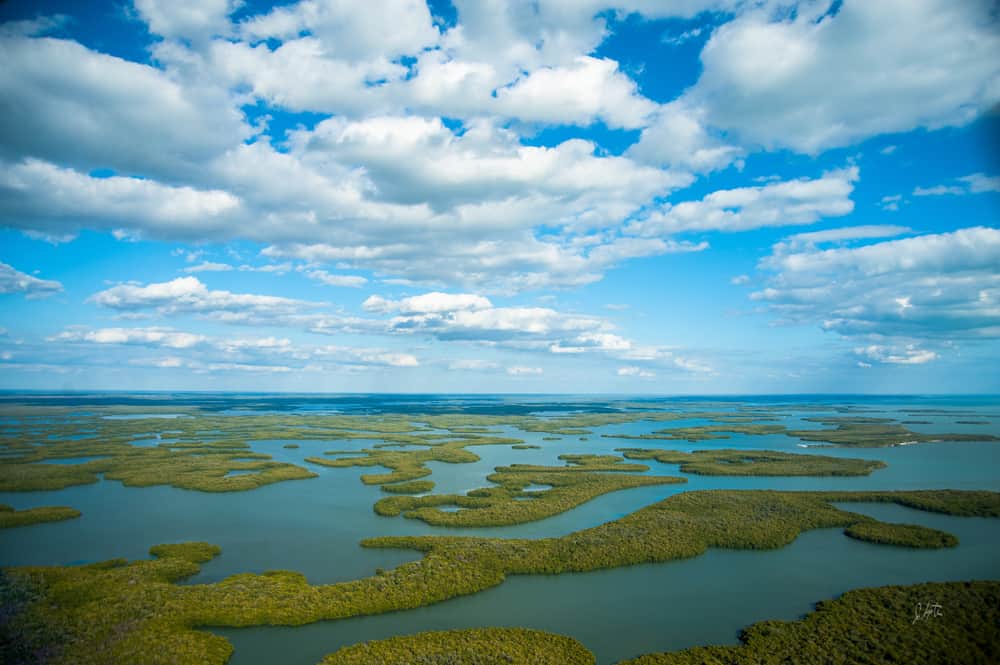
Everglades National Park is mostly accessible by water so boating with your own boat or a rented one is a great way to experience this Florida national park.
Kayaking and canoeing put you in the middle of the vegetation, and there are many short trails and long trails such as the 99 mile long Wilderness Waterway that let you experience the unrivaled majesty of the national park. There are also many campsites throughout the park.
Before you venture to Everglades National Park, make sure you understand that there are two seasons: dry season and wet season.
Dry season starts in November and goes till March. Dry season also attracts the most tourist due to the warm winter weather and the migration of a variety of wading birds and their predators to the park.
Wet season starts in April and goes till November. Wet season is not as busy as dry season due to a muggy climate, the plethora of bugs, and that many ranger programs are temporarily stopped.
The entrance fee is $30 per car, and is valid for seven consecutive days. For people who are walking around the park, or cyclists, the entrance fee is $15, however children ages 16 and younger are free of charge.
Additional entrance fees can be found here .
For more information about visiting and staying in the Everglades, check out 20 Interesting Weekend Getaways in Florida .

Biscayne National Park
While this watery wonderland is a stones throw from the concrete jungle of Miami, this paradise transports you to the emerald islands, turquoise waters, and colorful coral reefs found in this national park.
The park is an expansive 172,971 acres and 95 percent is water. This national park is home to Elliott Key, which is the largest island in the park.
There are fun activities for everyone at this national park. From guided eco adventures, fishing and lobstering, boating, paddling, snorkeling, camping, observing wildlife, to relaxing and admiring the view, everyone will enjoy the time spent at this National Park in Florida.
There is no daily entrance fee for this national park, however if you plan to camp overnight on either Elliott Key or Boca Chita Key, there is a fee of $25.
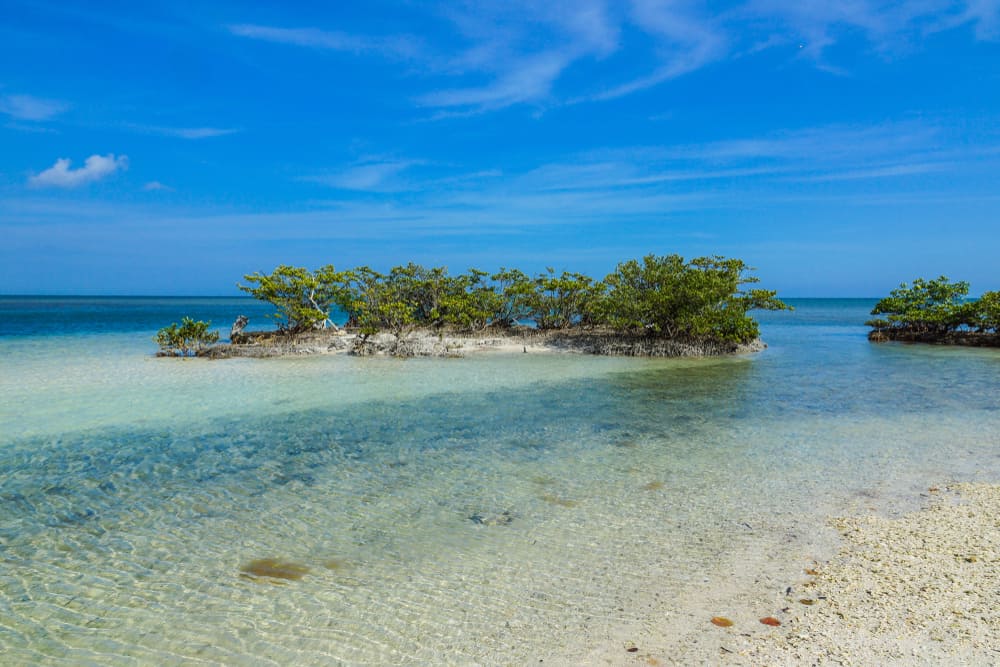
Dry Tortugas National Park
These seven beautiful islands make up the 100 square mile Florida National Park known as Dry Tortugas. This is one of the coolest parks to add to your National Park Checklist!
While the park is mostly made up of the warm waters of the Gulf of Mexico, it is also home to the famous 19th Century Fort named Fort Jefferson after the 3rd US President, Thomas Jefferson. While it is roughly 70 miles west of Key West, this National Park is definitely worth the trip, and here’s why!
The tropical setting of the islands combined with the fact that the fort is the largest masonry structure in the western hemisphere makes this Florida National Park one of the most unique places to visit.
The sandy beaches, coral reef, and marine life all make this National Park in Florida a great place to swim and snorkel. There are so many sea turtles in these crystal clear waters, that in 1513 when Ponce de Leon found the Dry Tortugas, he named the islands “tortugas” which means turtles in Spanish.
After a swim and a snorkel, be sure to visit the historic 19th century fort, which was built to protect the southern coast of the US and also used as a prison for criminals and deserters during and after the Civil War. If you want to spend the night, there are only eight campsites in the Garden Key Campground that are available on a first-come, first-served basis.
This Florida National Park can be reached by ferry from Key West on the Yankee Freedom III which takes about 2 hours 15 minutes. The ferry can be a rough and choppy ride, so if you are prone to motion sickness, you may wish to contact Key West Seaplane Adventures, which is the only seaplane service to Dry Tortugas, and takes about 40 minutes.
To reserve a spot on the ferry as well as pricing, you can visit here , and to reserve a spot on the seaplane as well as pricing, you can visit here .

Castillo de San Marcos National Monument
In the beautiful city of St. Augustine lies the oldest masonry fort in the US named Castillo de San Marcos which is Spanish for “St. Mark’s Castle.” Construction began in 1672 which makes it over 345 years old.
This enormous Spanish stone fort was meant to defend Spain’s claims in the New World from enemy attack. This National Monument is a treasure of 17th century St. Augustine, and has played an active role in the early history of the US.
There are many ways to enjoy the beauty of Castillo de San Marcos such as guided ranger tours of the fortress, a virtual tour, experiencing living history, weapon demonstrations, and cannon firings.
However you chose to spend your day at this Florida National Monument, you will be rewarded with an enriching, fun, and memorable time!
The entrance fee for Adults ages 16 and older is $15 and the entrance fee for children ages 15 and younger is free of charge. The tickets can be used for seven consecutive days.
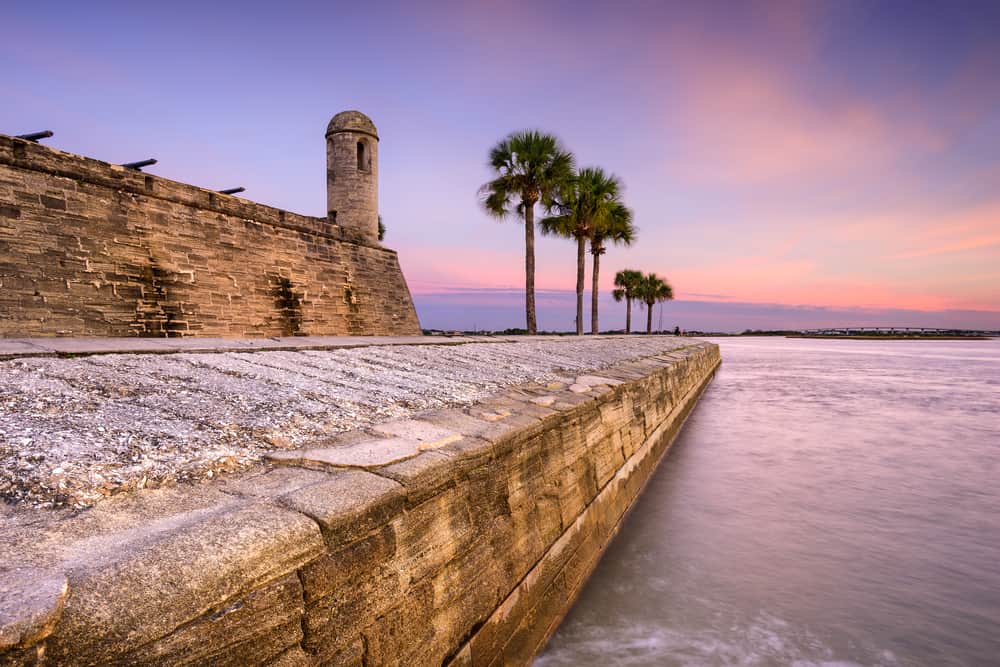
Fort Matanzas National Monument
Just 14 miles south of St. Augustine, and after a free ferry ride across the Matanzas Inlet, you’ll find the spectacular Spanish-fortified watchtower which was built in the 1700s.
This picturesque structure was built of coquina which is made up of seashells and sand, and was used to protect the southern approach to the Spanish who were stationed at St. Augustine.
Spending time at this Florida National Monument is best enjoyed by immersing yourself in exploring the park.
There are many adventures to be had such as walking the Nature Trail or the Marsh Trail, fishing on both the river and ocean side, and learning from park rangers. Children even have the opportunity to become a Junior Ranger, and everyone will love the breathtaking views of St. Augustine’s best beach.
It is important to remember that there is only one way to get to this National Park in Florida. You must get a ticket at the visitor center and board a ferry at either 9:30, 10:30, 11:30, 12:30, 1:30, 2:30, 3:30, or 4:30.
There are no fees for the ferry or for admission to the monument, but the passes are issued on a first-come first-served basis.
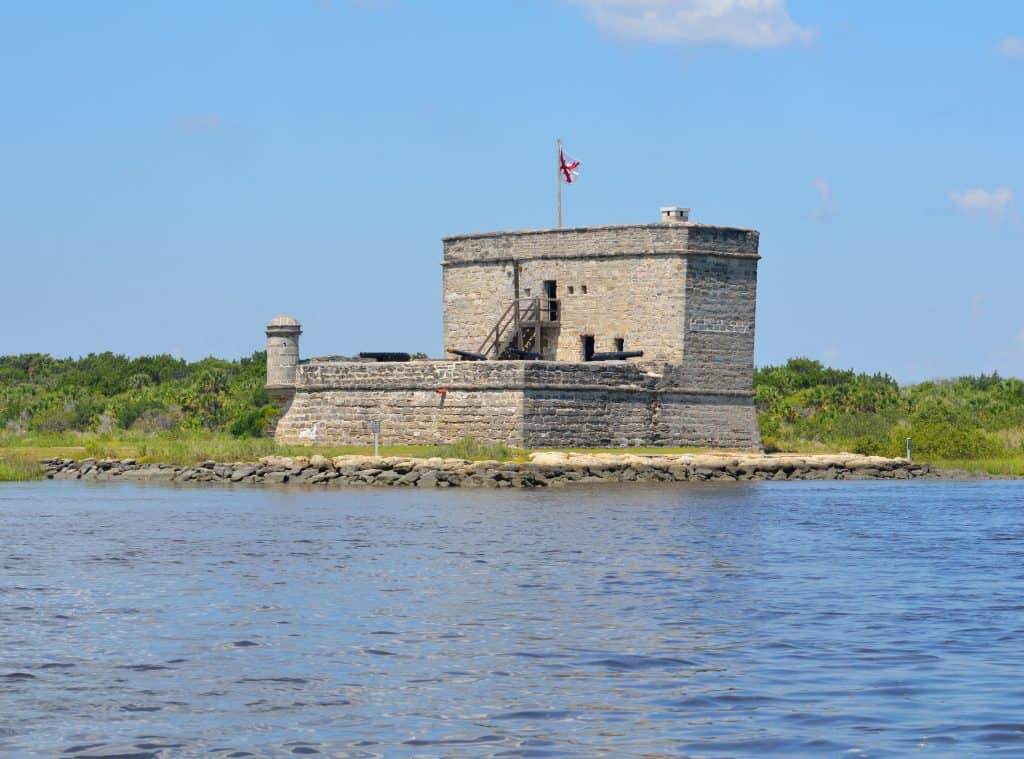
Canaveral National Seashore
Located between New Smyrna Beach and Titusville on the barrier island you’ll find the pristine Canaveral National Seashore.
This heavenly seashore is as close to a perfect beach as one can find, as it is still untouched by development. It provides both a place to reflect and unwind where true tranquility abounds.
There is a wide variety of endangered species who seek shelter in this uninhabited seashore. From five different types of sea turtles, to snakes, birds and manatees, time spent at this majestic place will surely bring you up close and personal to lots of different animals. In addition, the seashore has abundant flora and over 1,000 species of plants can be found in this National Park in Florida.
There are many activities that you can do at this National Seashore. Many of these activities focus on nature, science, history, and culture. From simply strolling the beach, to swimming in the water, to the amazing ocean fishing, you are sure to enjoy any time spent at this paradise.
You can either purchase a park pass at the Apollo Beach or Playalinda Beach entrance. More information on passes and fees are listed here.
To learn more about the Canaveral National Seashore and other fun places nearby, check out 18 Best Day Trips From Orlando Worth the Effort .
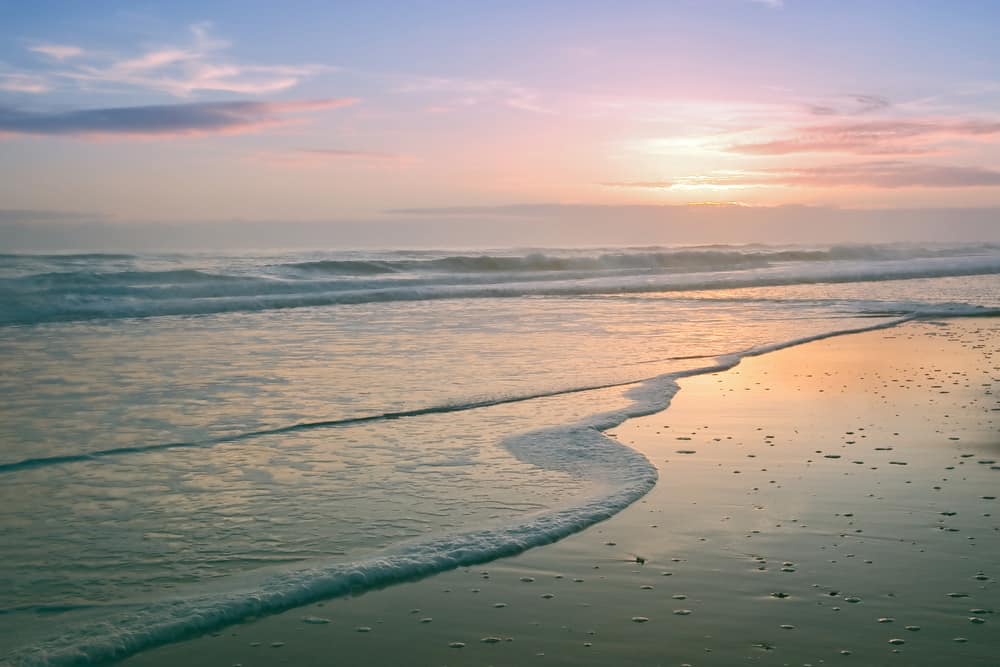
Gulf Islands National Seashore
Gulf Islands National Seashore is the longest stretch of federally protected seashore in the US. White sugar sand and sparkling turquoise waters of the Gulf of Mexico, provide the ultimate relaxation without crowds of people or development.
This National Park in Florida is home to an abundant ecosystem that is teeming with wildlife. You can find osprey, great blue herons, dolphins, sea turtles and so many more.
There are numerous activities to do at this National Seashore. Do not miss swimming, or snorkeling in the crystal-clear waters where you can see lots of fish, crabs, starfish, and sand dollars. You can also fish, kayak, boat, bike, camp, or join a ranger for a nature tour.
If you are into history then make sure to check out the three forts within the National Seashore built to fortify Pensacola Harbor: Fort McRee, Fort Pickens and Fort Barrancas.
Entrance fees are needed at the Fort Pickens Area, Okaloosa Area, Perdido Key Area, Opal Beach at the Santa Rosa Area, and the Fort Barrancas Area. Eighty percent of the fees are used to improve facilities at this beautiful park. For more information on fees visit here .
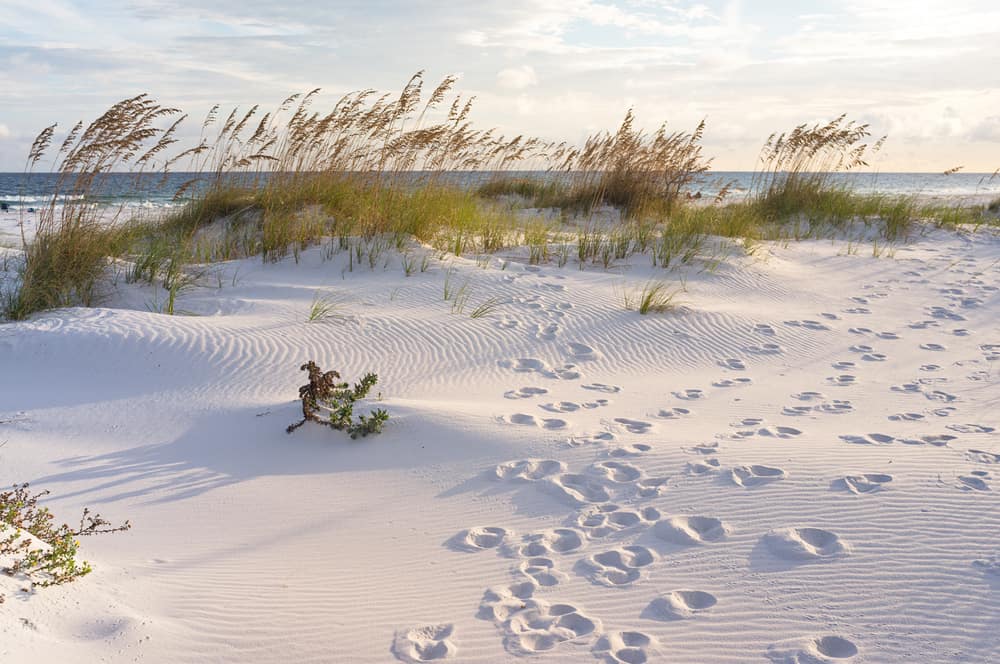
De Soto National Memorial
De Soto National Memorial can be found five miles west of Bradenton. This National Memorial was built to remember the 1539 landing of Hernando de Soto and the subsequent first major exploration by Europeans of the southern US.
History truly comes alive at this National Memorial, and there are so many activities to engage in. A living history camp called Camp Uzita will find you interacting with rangers and volunteers dressed in period clothing while telling historical tales. There are also craft and weapons demonstrations.
Outdoor activities include: ranger led kayak tours, nature trails, bird watching, swimming, fishing and boating. Keep in mind that there are only ten picnic tables available in the parking lot on a first-come basis, and no camping is allowed within the National Memorial.
The De Soto National Monument does not require any entrance fee. If you have any questions about making a reservation for a group tour, click here .
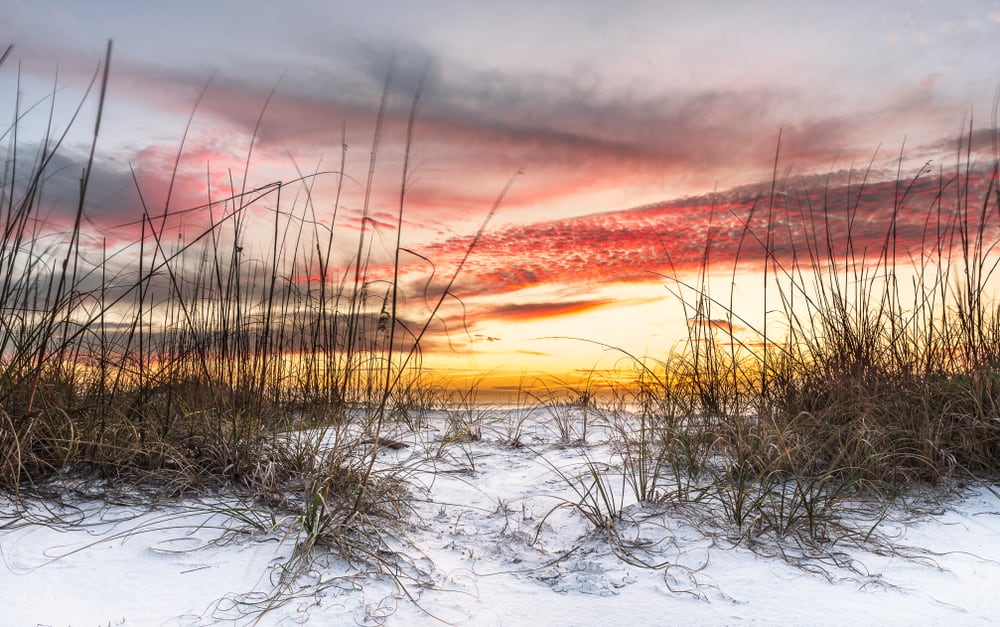
Fort Caroline National Memorial
Fort Caroline National Memorial is in Duval County on the banks of the St. Johns River. It commemorates the brief French presence in 16th century Florida.
History comes alive at this National Memorial through the informative and educational visitor center and the small museum. In addition there are historical reenactments.
Kids can earn a Junior Ranger Badge and there are both short and long nature trails to hike. Be sure to keep an eye out for dolphins who leap in and out of the St. Johns River.
The Fort Caroline National Memorial does not require any entrance fee.
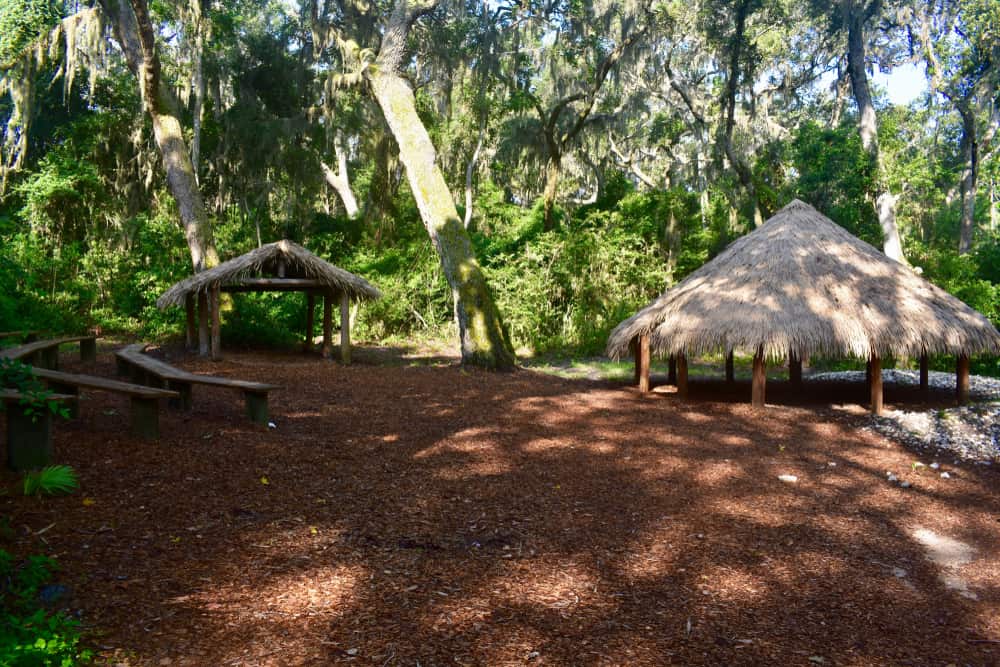
Timucuan Ecological & Historic Preserve
Timucuan Ecological & Historic Preserve is located in Jacksonville and it houses the Fort Caroline National Memorial and the Kingsley Plantation. Within this spectacular preserve you’ll find 46,000 acres of coastal wetlands on the Atlantic Ocean coast.
In this vast unblemished wilderness you will be immersed in both history and beauty. History comes alive when you visit the Kingsley Plantation to learn about slavery and freedom, and when you visit Fort Caroline National Memorial.
You can also learn more about nature and science within this National Park in Florida from ranger-led programs. There is also boating from Cedar Point. You can experience 600 acres of forest, wetlands and vegetation from numerous nature trails in the Theodore Roosevelt Area.
A must see is the historic American Beach which was founded in 1935 so that during segregation African Americans could have a resort-like beach. You will find a great big sand dune in the middle of American Beach.
The Timucuan Ecological & Historic Preserve does not require a fee for entrance or any other activities.
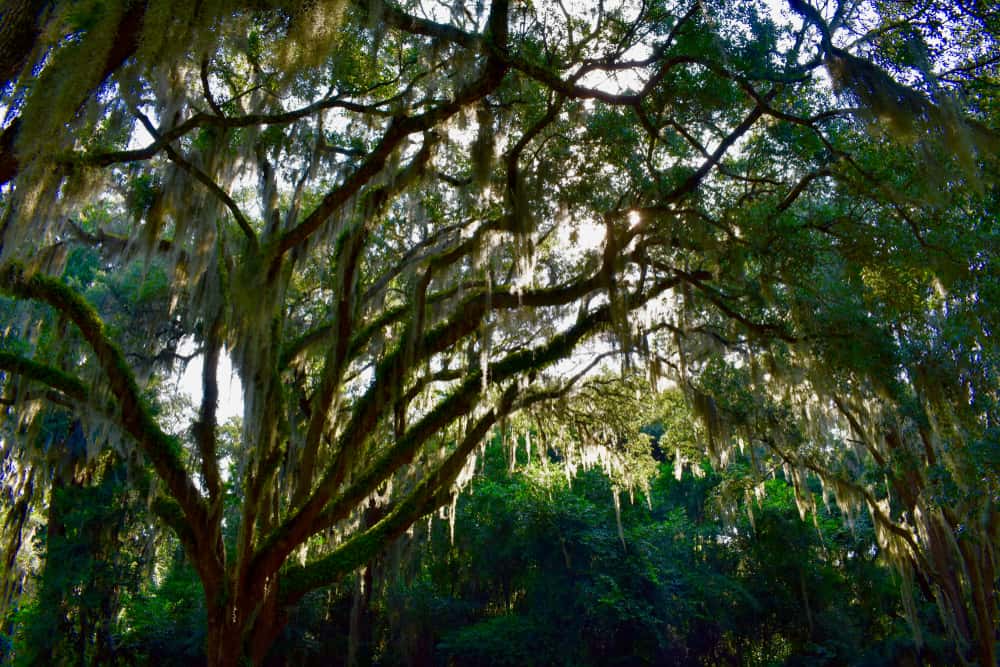
Big Cypress National Preserve
Big Cypress National Preserve is located in South Florida about 45 miles west of Miami on the Atlantic coastal plain. The freshwaters of this Florida National Park protect both the Everglades and the marine estuaries of Florida’s southwest coast.
Within the 729,000 acres of enormous swamp you’ll find diverse wildlife, including the majestic Florida panther. As you enjoy the great outdoors, you will be impressed with both the tropical and temperate plant life that thrive within the preserve.
There are many great activities waiting for you such as swamp buggy, biking and bird tours, exploration by cane or kayak, off-roading, scenic drives, and camping.
Ranger-led programs like discussions to learn more about the preserve, swamp tours and canoe rendezvous let you deeply explore and truly learn more about the amazing aspects of the preserve.
One super cool fun fact about this National Park in Florida is that Big Cypress has been designated as an International Dark Sky Place. Here you have one of the last protected night skies where you can still enjoy the magnificent Milky Way and thousands of stars with your naked eye. Do not miss seeing the night sky from Big Cypress National Preserve.
There is no entrance fee into the park, however, there is an annual fee of $100 for an off-road vehicle. Also, if you plan on camping overnight, the prices vary based on different parts of the park. Visit here to learn about off-road vehicle permits, and visit here for more information on camping fees.
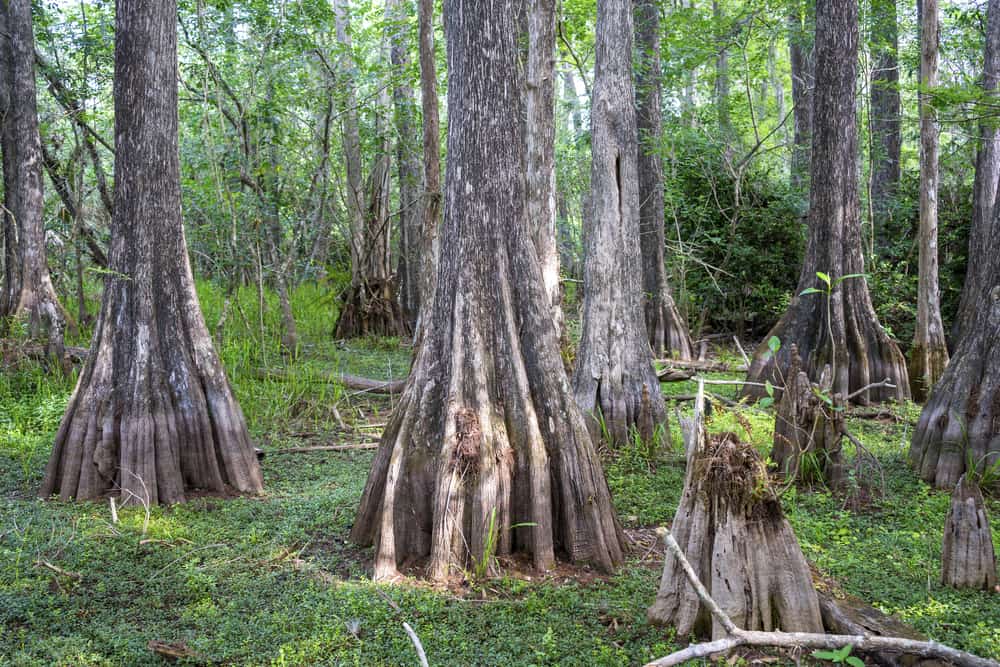
Gullah/Geechee Cultural Heritage Corridor
The Gullah/Geechee Cultural Heritage Corridor spans a huge area of the US east coast from North Carolina to Florida. You can visit this National Park in Florida in beautiful Jacksonville.
This park will bring on a journey back in time to learn about the unique culture of the Gullah/Geechee people, who have long resided in this corridor.
The Gullah/Geechee are descendants of Central and West Africans who were brought to America through the Transatlantic Slave Trade. Jacksonville remains the home of the largest Gullah/Geechee descendants in the US.
If you want to visit this enriching place, it’s important to remember that there is not one entrance, or one visitor center. There are many areas from Wilmington to Jacksonville where you can visit, and learn more about the Gullah/Geechee people, as well as their culture.
To learn more about this historic corridor, click here .
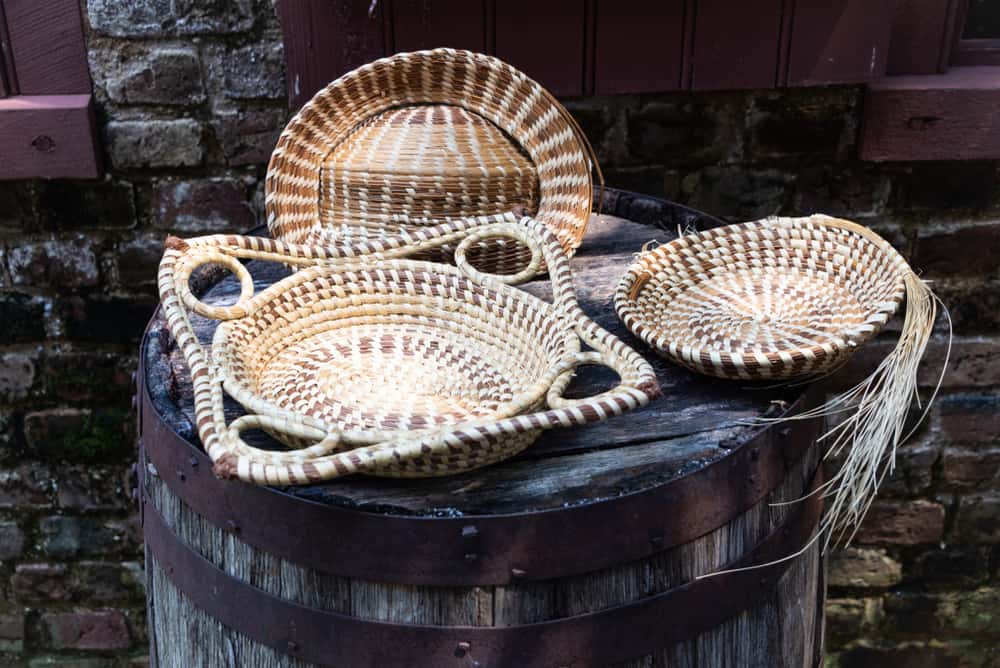

IMAGES
VIDEO
COMMENTS
National Parks Near Orlando goes from the marsh lands & gator-filled swamps of the Everglades to the underwater world of Biscayne.
Here’s a complete list of the national parks in Florida, including everything you need to begin planning your visit. All 11 national parks in Florida are some of the most unique in the country. From the diverse Everglades to the historic Castillo de San Marcos, there’s a lot to discover here.
Explore nine national parks and monuments in Florida, from the Everglades to Dry Tortugas. Find maps, alerts, conditions, and basic information for each park.
Thanks to low-lying land, plenty of sun, and summer showers, there are many stunning national parks and gardens near Orlando. Of course, the world-famous Everglades swampland is a renowned area of natural beauty, but there’s a wealth of parks and gardens across Florida for lovers of the great outdoors.
Discover the diverse and rich nature of Florida's National Parks, from Everglades to Dry Tortugas. Learn about the activities, wildlife, entrance fees, and how to get to each park.
Explore six National Parks near Orlando, Florida, from Canaveral National Seashore to Timucuan Ecological and Historic Preserve. Learn about their attractions, distances, lodging, camping, and addresses.